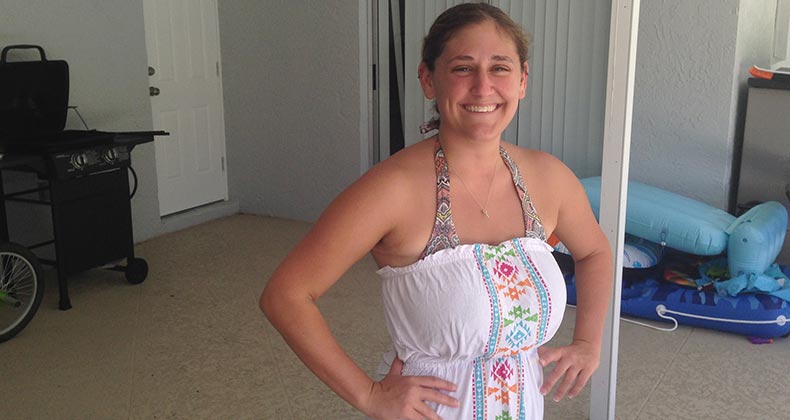mortgage

Tetra Images/Getty Images
Mortgage fees went up only slightly this year, an exclusive Bankrate.com survey finds, even as lenders complain that new federal regulations have dramatically increased their costs.
The fees that lenders directly charge to borrowers rose 1.6% in 2016 compared with 2015, Bankrate’s survey of mortgage closing costs shows. The average lender-charged fees totaled $1,058, compared with $1,041 in 2015.
See the average closing costs in your state.
Such a small increase seems surprising, because lenders say they have hired more employees, upgraded software and now spend more time scrutinizing each mortgage application as a result of new “know what you owe” regulations that are intended to protect borrowers.
“The harder part was getting all of the proof of income and all of the stuff that they needed to approve us in the first place.”
Even critics within the mortgage industry acknowledge that the regulations have resulted in new mortgage disclosure documents that borrowers find easier to understand.
“The cost of compliance has gone up,” says Shashank Shekhar, president and CEO of Arcus Lending, in San Jose, California. “So many things have to be tracked and followed, and the cost of that needs to go somewhere.” Still, he says, “I don’t think the fees themselves increase.”
RATE SEARCH: Shop today for a mortgage.
What the regulations are about
The Consumer Financial Protection Bureau instituted a slew of new rules in October. Among them:
- The bureau introduced new mortgage disclosure documents — the Loan Estimate and the Closing Disclosure — that are easier to understand than the old documents that were rolled out when Leonardo DiCaprio was a newborn (i.e., late 1974).
- The new Loan Estimate has stricter accuracy requirements than the document it replaces, the Good Faith Estimate.
- Lenders must provide borrowers the Closing Disclosure at least 3 days before closing — and substanial changes to the loan (a new interest rate or higher fees) trigger a new, 3-day waiting period. This prevents lenders, title and escrow companies and sellers from sneaking last-minute changes past borrowers.
Closing was the easy part

Amanda Wagner and her husband bought a home in South Florida recently. She says putting the application together was the hardest part. Photo by Holden Lewis/Bankrate
Many borrowers regard closing costs as a necessary evil — and far from the worst part of the mortgage process. Amanda and Michael Wagner were newlyweds when they bought their house this past spring in Jensen Beach, Florida. It was the first house, and first mortgage, for both of them. They got a 0% down Veterans Administration-guaranteed loan with a 3.5% interest rate. They rolled the VA funding fee into the loan amount, and cash to close was about $7,000, Amanda says. That was a lot, but there were no surprises at the closing table. The pain was at the beginning of the process, putting the application together.
“The harder part was getting all of the proof of income and all of the stuff that they needed to approve us in the first place,” she says. “That was the most annoying part.”
How the survey is conducted
Bankrate requested loan estimates for a $200,000 mortgage from up to 10 lenders in a major city in each state, plus Washington, D.C. The hypothetical loan would buy a single-family home for a borrower with excellent credit and a 20% down payment.
See the 5 most expensive states for closing costs (hint: Hawaii is No. 1) and the 5 least expensive states for closing costs (hooray for the Keystone State).
RATE SEARCH: Get preapproved for a mortgage today.
Mortgage fees this year
Closing costs come in 3 main categories:
- Fees charged directly by the lender. These are the fees that went up 1.6% on average this year.
- Third-party fees for services such as closing and settlement, appraisal, credit report and flood certification. More on these in a moment.
- Other charges, such as for title insurance, homeowners insurance and property taxes. These vary a lot from place to place and even by whether the closing occurs closer to the beginning or end of the month. Because these costs are so variable, Bankrate doesn’t include them in its annual survey.
Bankrate does survey for the middle category of fees: those for work performed by 3rd parties, including closing and settlement services. We’ve found that in 2016, those total $1,070 — up 32.7% from 2015. But that percentage deserves a big, fat asterisk.
Rather than reflecting higher 3rd-party charges, the larger dollar figure is evidence that lenders are more thorough under the Consumer Financial Protection Bureau’s stricter rules that went into effect in October. Lenders accounted for all the various fees in this category when preparing loan documents this year. That wasn’t always the case previously.
For example, almost half of the lenders in our 2015 survey did not furnish a dollar figure in the category of “attorney, closing or settlement fees.” But this year, all of the loan estimates included a dollar figure in this category.
Comparing mortgage fees
The best way to shop for a mortgage is to get more than one Loan Estimate and to compare the dollar totals for lender-charged fees and 3rd-party fees. “Make sure you’re not distracted by individual line items, and you’re looking at the big picture,” says Katy Parsons, mortgage originator for Finance of America Mortgage, in Portland, Oregon.
Lenders advise that you compare fees using loans with the same interest rate and term.
Parsons says, “The key is finding a good human who will help explain it,” and she prides herself on her ability to make the mortgage process understandable to her borrowers. She cautions borrowers not to underestimate the value of good customer service.
“You get what you pay for,” she says. “There’s always somebody who will do it cheaper, but the hell that you’re going to go through, having someone who’s not qualified to do your mortgage so you can save 200 bucks, is not worth it.” You want a human being who will answer your phone calls at 7:30 at night, she says.
“You get what you pay for.”
Echoing Shekhar, Parsons says her company has not raised fees, but “I think anytime you add another huge, expensive layer of compliance, and make changes, on some level that’s going to trickle down to the consumer.”
RATE SEARCH: Ready to shop for a mortgage? Find the best deal today.
Where do the costs go?
Yet, there’s little evidence that borrowers are paying higher fees or inflated mortgage rates.
The new regulations are known by the acronym TRID (for TILA/RESPA Integrated Disclosure) in the mortgage business. “I don’t believe that TRID added any costs to the lending process,” says Mat Ishbia, president and chief executive of United Wholesale Mortgage, in Troy, Michigan. Instead, he says, lenders had to pay “one-time costs as they geared up for it.”
Andrew Pizor, staff attorney for the National Consumer Law Center, says lenders have hired more employees to monitor compliance with rules and regulations. But he says lenders’ compliance efforts are aimed as much at mollifying investors as much they are at appeasing regulators.
advertisement
AUG
[related_posts_content limit="5" title="Related Posts"]














